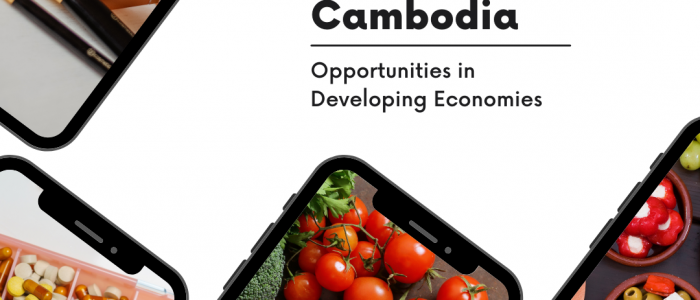Premium Products in Cambodia: Opportunities in Developing Economies

Over the past two decades, Cambodia has transitioned itself to be one of the fastest growing economies in the world, averaging at a GDP growth rate of 8% between 1998 and 2018. Situated in the heart of Southeast Asia, Cambodia is part of ASEAN which is one of the fastest growing consumer markets in the world. The country’s growing population, with the median age of 25, is expected to provide encouraging prospects to fuel economic growth and consumer demand built on a vibrant and young workforce base.
Built on years of experience in market entry, research and analysis, EMC was commissioned to conduct a study on the premium products sector in Cambodia – focusing on selected consumer sectors such as F&B, Skincare & Beauty, and Health Supplements – to identify opportunities for prospective brands and firms considering entering or expanding in Cambodia. In this article, we explore the different facets of the consumer market in Cambodia, and some insights on how the current pandemic has affected consumer habits in the country.
Distribution of wealth among Cambodia’s young population is heavily concentrated at the bottom end of the wealth spectrum. Disposable income in Phnom Penh is significantly higher than other provinces, with majority of middle- and upper-income population in urban centers. Product placement is key as brands and retailers need to gain an understanding of the distribution of shopper profiles across regions in order to maximize retail potential for any given type of product.
Exhibit 1: Wealth Patterns in Selected Countries

Source: Credit Suisse
Decline in tourist numbers has had ripple effects on the premium food market. Cambodia had 6.6 million international tourist arrivals in 2019, with both local and international investors looking to capitalize on the booming tourism industry. In a stark contrast of numbers, international tourist arrivals dropped by 80% in 2020, with only 1.3 million international tourist arrivals. This had inadvertently caused F&B business and hotels targeting tourists to cease operations, temporarily or permanently. Orders for fresh premium seafood and meats have been impacted by these closures.
The pandemic has forced distributors and retailers to find new ways to increase their customer reach. For prospective brands and products, understanding consumers’ behavior and preference for different type of products is critical for market entry success. Established product distributors and retailers are taking advantage of their local networks and marketing channels to expand new product offerings to consumers. Supermarkets, for instance, are using their social media platforms for online retail, rather than just simple traditional outreach campaigns to Cambodian customers.
Consumers are pressed to try new brands due to logistical issues. Border closures and logistical issues have created new challenges for consumers who are used to purchasing their favorite brand of products in other countries. These brands or products are typically unavailable in official retail outlets in Cambodia. We have observed an increasing number of grey market retailers who are trying to fill the gap between supply and demand.
ASEAN markets are unique but share similarities. Brands and retailers wanting to develop an eminent position in Cambodia need to gather a deeper understanding of the factors that drive consumer demand and the competitive landscape. This will enable brands to build effective strategies that will hopefully reduce the risks associated to entering a new market. Executives driving market entry decisions should make this a priority, especially in these unpredictable times.
For more information on research on consumer markets and strategy in Cambodia and the region, please contact EMC at <info@emc-consulting.asia>.
Follow our media channels:
Facebook Feeds at: https://www.facebook.com/emergingmarketsconsulting/
LinkedIn at: https://www.linkedin.com/company/emc_2/
Visit our website: https://emc-consulting.asia/

Comments are closed.